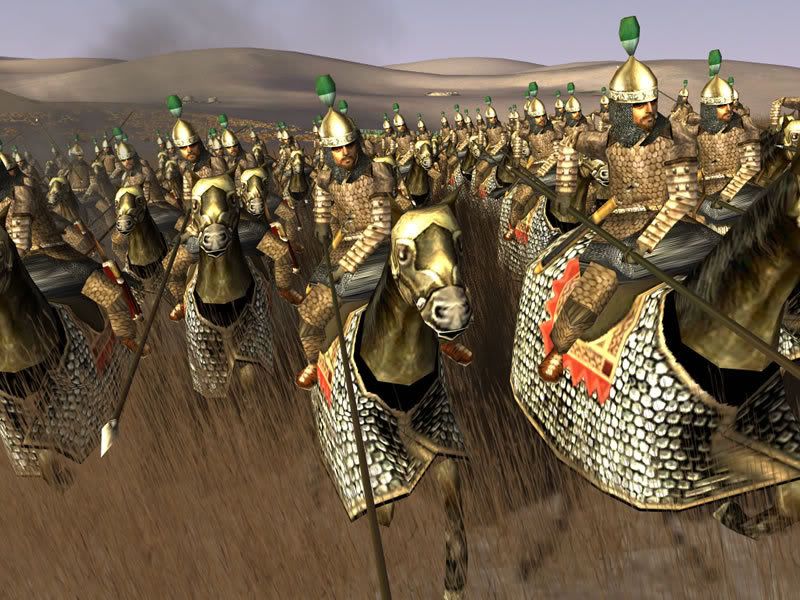.
.
.
Nazi Germany 1933-1945, lost WWII for many reasons (1939-45).
They lost primarily because the Jewish bankers who brought them into power, intended them to lose finally and ultimately after they had achieved a set of covert objectives for the International Jewish bankers based in London, New York, Basle, Zurich, Paris and Frankfurt.
There is no need to discus what these objectives were for the Jewish bankers, who ruled the Third Reich through Martin Bormann their point man, and the whole cabal of German secret Jews such as Eichmann, Hitler, Himmler, Goebbels, Hermann Göring, Martin Heidegger, Rudolf Hess, Reinhard Heydrich.
Iran is a bit like Nazi Germany, and I suppose the International Jewish bankers who brought the mullahs into power in 1979, have standard blue prints for such regime change, and turning otherwise peaceful civilized societies upside down.
The Internationals Jews have brought the mullahs into power through the UK/USA States, and yet are expending a great deal of energy demonizing their secret protege.
Another reason Nazi Germany lost besides the main one above is that despite being the 2nd greatest industrial power in 1941, Nazi German production of military hardware was completely confusing and illogical.
The famous Teutonic myth of organization, precision and simple logic was missing in the all important area of armaments production. Nazi Germany produced no less than 8 different armored vehicles simultaneously in 1944, and an array of over engineered expensive tanks....whereas one simple tank should have been produced in their place. In aircraft production it was even more complicated. All Germany needed was one simple FGA --Fighter Ground Attack (one plane which dog fights, attacks allied bombers, can also attack ground targets)....and yet according to wikipedia they produced..these wonderful array of models:
Primary aircraft
This list does not primarily include projects, prototypes or captured aircraft but consists mostly of the most common aircraft of the German Luftwaffe that participated in the Second World War. A full list of project aircraft and captured aircraft can be found at list of RLM aircraft designations in the form of the Reich Aviation Ministry's list of aircraft.See ALSO German aircraft production during World War II for the most produced types.
- Arado Ar 68 | Arado Ar 96 | Arado Ar 196 | Arado Ar 232 | Arado Ar 234 | Arado Ar 240
- Blohm und Voss BV 138 | Blohm und Voss BV 222
- Dornier Do 17 | Dornier Do 18 | Dornier Do 24 | Dornier Do 215 | Dornier Do 217 | Dornier Do 335
- Focke-Wulf Fw 189 | Focke-Wulf Fw 190 | Focke-Wulf Fw 200 | Focke-Wulf Ta 152 | Focke-Wulf Ta 154
- Gotha Go 242 | Gotha Go 244
- Heinkel He 45 | Heinkel He 46 | Heinkel He 59 | Heinkel He 60 | Heinkel He 111 | Heinkel He 114 | Heinkel He 115 | Heinkel He 162 | Heinkel He 177 | Heinkel He 219
- Henschel Hs 123 | Henschel Hs 126 | Henschel Hs 129
- Junkers Ju 52 | Junkers Ju 86 | Junkers Ju 87 | Junkers Ju 88 | Junkers Ju 90 | Junkers Ju 188 | Junkers Ju 252 | Junkers Ju 290 | Junkers Ju 388
- Messerschmitt Bf 108 | Messerschmitt Bf 109 | Messerschmitt Bf 110 | Messerschmitt Me 163 | Messerschmitt Me 210 | Messerschmitt Me 262 | Messerschmitt Me 321 | Messerschmitt Me 323 | Messerschmitt Me 410
German military aircraft, 1919–1945
While the Luftwaffe was not public until 1935, it had been in development in secret since the 1920s, and many aircraft made in the inter-war years were used during World War II.Fighters and interceptors
- Arado Ar 64, fighter biplane (prototype)
- Arado Ar 65, fighter/trainer biplane (re-engined Ar 64)
- Arado Ar 66, trainer/night attack
- Arado Ar 67, fighter biplane (prototype)
- Arado Ar 68, fighter biplane
- Arado Ar 76, fighter/trainer biplane (prototype)
- Arado Ar 80, fighter (prototype)
- Arado Ar 197, naval fighter (derived from Ar 68) (prototype)
- Arado Ar 240, heavy fighter/attack (prototype)
- Arado Ar 440 heavy fighter/attack derived from Ar 240 (prototype)
- Blohm & Voss BV 40, glider interceptor (prototype)
- Blohm & Voss BV 155, high-altitude interceptor (formerly Me 155) (project)
- Bachem Ba 349 Natter, rocket interceptor (prototype)
- Dornier Do 10 (Do C1) 1931 fighter (prototype)
- Dornier Do 335 Pfeil, fighter-bomber with push-pull engines (prototype)
- Dornier Do 435, (project)
- Dornier Do 635, (project)
- Focke-Wulf Fw 57, heavy fighter and bomber (prototype)
- Focke-Wulf Ta 152, fighter (derived from Fw 190)
- Focke-Wulf Ta 154, Moskito night-fighter
- Focke-Wulf Fw 159, fighter (prototype)
- Focke-Wulf Ta 183, jet fighter (project)
- Focke-Wulf Fw 187 Falke heavy fighter (prototype)
- Focke-Wulf Fw 190 Wurger fighter
- Heinkel HD 37 fighter biplane (used only by Soviets)
- Heinkel HD 38 fighter biplane
- Heinkel HD 43 fighter biplane (prototype)
- Heinkel He 49 fighter biplane (prototype)
- Heinkel He 51, fighter/close-support biplane
- Heinkel He 100, fighter (prototype)
- Heinkel He 112, fighter
- Heinkel He 113, (propaganda designation for He 100)
- Heinkel He 162 Volksjäger, jet fighter
- Heinkel He 219 Uhu, night-fighter
- Heinkel He 280, jet fighter (prototype)
- Heinkel He P.1079, all weather jet fighter (project)[citation needed]
- Henschel Hs 121, fighter/trainer (prototype)
- Henschel Hs 124, heavy fighter/bomber (prototype)
- Henschel Hs 125 fighter/trainer (prototype)
- Horten Ho 229, jet flying wing fighter (project)
- Messerschmitt Bf 109, fighter
- Messerschmitt Bf 110, heavy fighter/night-fighter
- Messerschmitt Me 163 Komet, rocket interceptor
- Messerschmitt Me 209, speed-record aircraft developed into fighter (prototype)
- Messerschmitt Me 209-II, fighter (completely different from Me 209) (prototype)
- Messerschmitt Me 210, heavy fighter/reconnaissance
- Messerschmitt Me 262 Schwalbe, jet fighter/bomber
- Messerschmitt Me 263, rocket interceptor (project – did not fly)
- Messerschmitt Me 309, fighter (prototype)
- Messerschmitt Me 328, pulse jet fighter (prototype)
- Messerschmitt Me 410, Hornisse heavy fighter/reconnaissance
- Messerschmitt Me 609, heavy fighter/bomber (project)
- Messerschmitt Me P.1101, jet fighter (project – did not fly)
- Messerschmitt Me P.1106, jet fighter (project)
- Messerschmitt Me P.1112, jet fighter (project)
Bombers and ground attack
- Arado Ar 234 Blitz, jet bomber
- Blohm & Voss Ha 140 torpedo bomber flying-boat (prototype)
- Dornier Do 11, (Do F) 1931 medium bomber
- Dornier Do 13, 1933 medium bomber (prototype)
- Dornier Do 17, Fliegender Bleistift, mail-plane/bomber/reconnaissance/night-fighter
- Dornier Do 18, 1935 bomber/reconnaissance flying-boat
- Dornier Do 19, Ural Bomber design competitor (prototype)
- Dornier Do 22, torpedo bomber/maritime reconnaissance
- Dornier Do 23, medium bomber
- Dornier Do 215, bomber/night-fighter
- Dornier Do 217, bomber/night-fighter
- Dornier Do 317, Bomber B design competitor (prototype)
- Fieseler Fi 98, 1936 biplane ground attack (prototype)
- Fieseler Fi 167, ship-borne torpedo bomber biplane
- Focke-Wulf Fw 191, Bomber B design competitor (prototype)
- Heinkel He 45, bomber/trainer
- Heinkel He 50, reconnaissance/dive bomber biplane
- Heinkel He 111, primary medium bomber in service
- Heinkel He 177 Greif, only operational long-range heavy bomber of the Luftwaffe
- Heinkel He 274, high-altitude bomber (prototypes completed by French)
- Heinkel He 277 never-built Amerika Bomber, heavy bomber (project)
- Heinkel He 343, never-built jet bomber (project)
- Henschel Hs 123, ground-attack biplane
- Henschel Hs 127, bomber (prototype)
- Henschel Hs 128, high altitude reconnaissance bomber (prototype)
- Henschel Hs 129, ground-attack
- Henschel Hs 130, high altitude reconnaissance bomber and Bomber B design competitor (prototype)
- Henschel Hs 132, jet dive bomber (prototype)
- Junkers Ju 86, bomber reconnaissance
- Junkers Ju 87 Stuka, dive-bomber
- Junkers Ju 88, bomber/reconnaissance/night-fighter
- Junkers Ju 89, Ural Bomber design competitor (prototype)
- Junkers Ju 90, bomber (prototype)
- Junkers Ju 187, dive bomber (prototype)
- Junkers Ju 188 Rächer, bomber
- Junkers Ju 287, heavy jet bomber (prototype)
- Junkers Ju 288, Bomber B design competitor (prototype)
- Junkers Ju 290, long-range bomber (prototype)
- Junkers Ju 390 Amerika Bomber, heavy bomber (prototype)
- Junkers Ju 488, heavy bomber (project)
- Junkers EF 132, heavy bomber (project)
- Messerschmitt Bf 162, bomber (prototype)
- Messerschmitt Me 264 Amerika Bomber, heavy bomber (prototype)
Patrol and reconnaissance
- Arado Ar 95, coastal patrol and attack biplane seaplane
- Arado Ar 196, ship-borne reconnaissance/coastal patrol seaplane
- Arado Ar 198 reconnaissance (prototype)
- Arado Ar 231, folding wing U-boat reconnaissance aircraft (prototype)
- Blohm & Voss BV 138, flying-boat (early versions as Ha 138)
- Blohm & Voss BV 141, asymmetric tactical reconnaissance
- Blohm & Voss BV 142, reconnaissance transport
- Blohm & Voss BV 238, flying-boat (prototype)
- DFS 228, rocket-powered reconnaissance aircraft (prototype)
- DFS 346, rocket-powered reconnaissance aircraft (project completed by Soviets)
- Dornier Do 16 Wal, reconnaissance flying-boat
- Dornier Do 24, reconnaissance bomber flying boat
- Fieseler Fi 156 Storch, STOL reconnaissance aircraft
- Focke-Wulf Fw 62 ship-borne reconnaissance biplane seaplane
- Focke-Wulf Fw 189 Uhu tactical reconnaissance
- Focke-Wulf Fw 200 Condor, transport and maritime patrol bomber
- Focke-Wulf Fw 300, proposed version of Fw 200 (project)
- Focke-Wulf Ta 400 (project)
- Gotha Go 147 STOL reconnaissance (prototype)
- Heinkel He 46, reconnaissance
- Heinkel He 59, biplane reconnaissance seaplane
- Heinkel He 60, ship-borne reconnaissance biplane seaplane
- Heinkel He 114, reconnaissance seaplane
- Heinkel He 116, transport/reconnaissance
- Heinkel He 119, bomber/reconnaissance (prototype)
- Henschel Hs 126, reconnaissance
- Junkers Ju 388, reconnaissance/night-fighter
- Messerschmitt Bf 163, STOL reconnaissance aircraft (prototype)
- Messerschmitt Me 261, long-range reconnaissance (prototype)
- Siebel Si 201 STOL reconnaissance aircraft (prototype)
Transports and utility
- Arado Ar 232, transport
- Blohm & Voss Ha 139, long-range seaplane
- Blohm & Voss BV 144, transport (prototype)
- Blohm & Voss BV 222 Wiking, transport flying-boat (prototype)
- DFS 230, transport glider
- DFS 331, transport glider (prototype)
- Dornier Do 12 Libelle seaplane
- Dornier Do 14, seaplane (prototype)
- Dornier Do 26, long-range seaplane
- Dornier Do 214, transport flying-boat (project)
- Gotha Go 146, 1935 twin-engine transport (prototype)
- Gotha Go 242, transport glider
- Gotha Go 244, transport
- Gotha Go 345, assault glider (prototype)
- Gotha Ka 430, transport glider (prototype)
- Heinkel He 70 Blitz, single-engine transport mailplane, 1932
- Heinkel He 115, general-purpose seaplane
- Junkers Ju 52 Tante Ju, transport bomber
- Junkers Ju 252, transport (prototype)
- Junkers Ju 322 Mammut, transport glider (prototype)
- Junkers Ju 352 Herkules, transport (prototype)
- Junkers W34, single engine transport
- Klemm Kl 31, 1931 single engine trainer
- Klemm Kl 32, 1931 single engine trainer
- Klemm Kl 36, 1934 single engine trainer
- Messerschmitt Me 321 Gigant, transport glider
- Messerschmitt Me 323 Gigant, transport
- Siebel Fh 104 Hallore, medium transport
- Siebel Si 204, transport and aircrew trainer
Trainers
- Albatros Al 101
- Albatros Al 102 (prototype)
- Albatros Al 103 (prototype)
- Arado Ar 69, 1933 biplane) trainer (prototype)
- Arado Ar 96, advanced trainer
- Arado Ar 199, seaplane trainer (prototype)
- Arado Ar 396, advanced trainer variant of Ar 96
- Bücker Bü 131 Jungmann, biplane trainer
- Bücker Bü 133 Jungmeister, aerobatic biplane trainer
- Bücker Bü 180 Student, trainer
- Bücker Bü 181 Bestmann, trainer and light transport
- Bücker Bü 182 Kornett, trainer (prototype)
- Fieseler Fi 5 1933 acrobatic sportsplane/trainer
- Focke-Wulf Fw 44 Stieglitz, trainer biplane
- Focke-Wulf Fw 56 Stösser, parasol monoplane trainer
- Focke-Wulf Fw 58 Weihe, transport/trainer
- Gotha Go 145, trainer
- Heinkel He 72 Kadett, trainer
- Heinkel He 74, fighter/advanced trainer (prototype)
- Heinkel He 172, trainer (prototype)
- Klemm Kl 35, 1935 sportplane and trainer
- Messerschmitt Bf 108 Taifun, trainer and light transport
- Siebel Si 202 Hummel, 1938 sportplane and trainer
Helicopters
- Flettner Fl 184 reconnaissance helicopter (prototype)
- Flettner Fl 282 Kolibri, reconnaissance helicopter
- Focke Achgelis Fa 223 Drache, transport helicopter
- Focke Achgelis Fa 266 Hornisse, helicopter (project)
- Focke-Achgelis Fa 269, tilt rotor helicopter (project)
- Focke Achgelis Fa 330, autogyro kite (prototype)
- Focke Achgelis Fa 336, 1944 scout helicopter (project)
- Focke-Wulf Fw 61, twin rotor helicopter (prototype)
- Focke-Wulf Fw 186, reconnaissance autogyro (prototype)
Captured aircraft
- Avia B-534 biplane fighter captured in Czechoslovakia
- Avia B-71 bomber captured in Czechoslovakia
- Rogožarski IK-3 fighter captured in Kingdom of Yugoslavia
- Bloch M.B.175 bomber captured in France
- Boeing B-17 Flying Fortress captured US bomber
- Caproni Ca.313 Italian bomber
- Caudron C.445 transport captured in France
- Dewoitine D.520 fighter captured in France
- Morane-Saulnier MS-230 trainer captured in France
- North American NAA 57 & NAA 64 Captured French trainers built in the US
- Zlín Z-XII & 212 captured Czechoslovakian trainer
Utterly senseless ! and the Germans didn't even mobilize the whole economy for war...or about 80% of GDP, as the British and Japanese had done. Women were excluded from the serious business of war.
The Nazi German uniforms, designed by the homosexuals in the Nazi party (gay people sometimes have good fashion sense) and German military equipment are/were aesthetically pleasing, and sexy to look at.....


BUT......given the industrial base, the country could have produced 200,000 medium and light tanks instead of just 50,000....AND 300,000--400,000 Aircraft instead of just 120,000 .V1 and V2 were held back for use in the battlefield by Hitler personally until it was too late, and their subsequent use would have inconsequential effects.........literally millions of these pioneering state of the art weapons could have been used.
BUT let us not confuse the basic human desire for aesthetics in all things with what was essentially an experiment regime of the Jewish bankers, which was utterly evil especially towards Germans(10 million dead) and Soviets (30 million dead).
Imagine if the regime was resupplied and retooled through neutral Sweden by the International Jewish bankers through into 1955......instead of 60 million dead there could have been 150 million dead in the world.
So on to Nazi mullah Iran.....it too has similar weapons systems, which does not have one central weapons production authorization agency. In Iran different agencies have different weapons priorities, programs, and projects. Thats OK if you are a superpower such as China and the USA, with massive industrial bases, but not in the case of Iran.
So the mullahs say they have produced a new shoulder fired lt. SAMs....good. Maybe the mullahs can produce 20,000 of such systems equipped with 1,000,000 missiles. AND yet the mullahs are already producing such systems through reverse engineering, so why produce so many different models?
- Qaem - anti-helicopter, light-weight, laser guided missile
- Misagh-1 - copy of Chinese QW-1 Vanguard with upgrades
- Misagh-2 - copy of Chinese QW-2 Vanguard
___________________________________________
IRGC tests new shoulder-launched anti-aircraft gun

An Iranian soldier fires a shoulder-launched anti-aircraft gun during a military exercise. (file photo)
Presstv.com
Iran’s Islamic
Revolution Guards Corps (IRGC) has tested a shoulder-launched
anti-aircraft gun, which can be used to shoot down any helicopter
intruding into Iranian airspace.
.The spokesman for the Payambar-e Azam 8 (The Great Prophet 8) war games, Brigadier General Hamid Sarkheili, said on Saturday that the new weapon was domestically designed and developed by IRGC defense technicians.
He added that the 20-mm caliber weapon can target helicopters at a distance of 1,400 meters (4,593 feet).
The IRGC Ground Forces started the Payambar-e Azam 8 exercise, which includes practice maneuvers of various defense tactics, in the southeastern province of Kerman on Saturday.
Special modern warfare units conducted drills, asymmetrical warfare tactics were practiced, and various types of unmanned aerial vehicles were tested on the first day of the war games.
On Saturday, the deputy commander of the IRGC Ground Forces said that the Great Prophet 8 maneuver is being held to practice passive defense in asymmetrical warfare through the use of various techniques and tactics.
Brigadier General Abdullah Araqi added that the IRGC Ground Forces are improving their defensive capabilities.
Over the past few years, Iran has held several war games to enhance the defense capabilities of its armed forces and to test modern military equipment and practice tactics.
___________________________________________


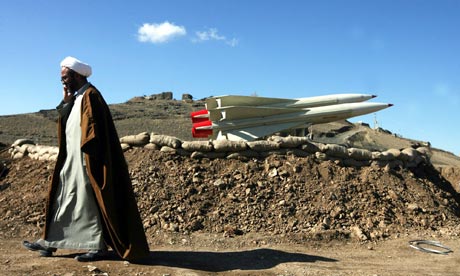

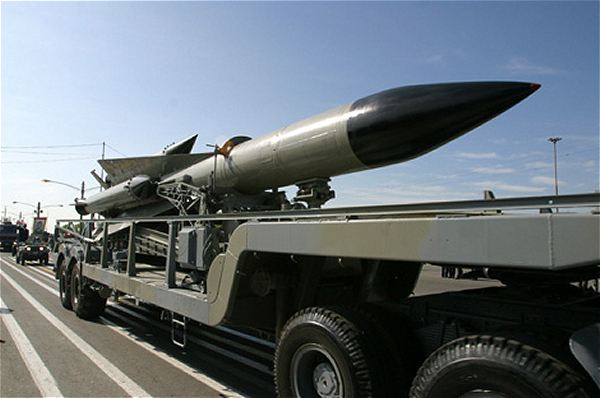

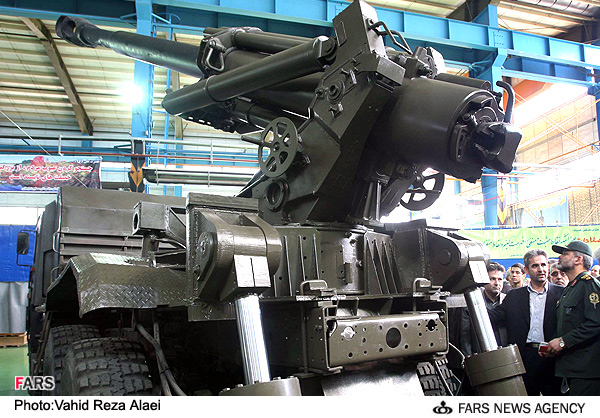



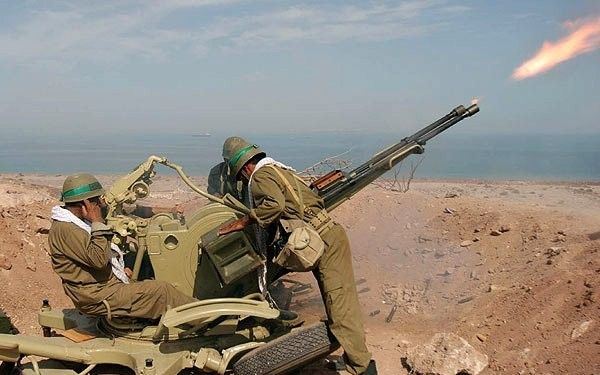

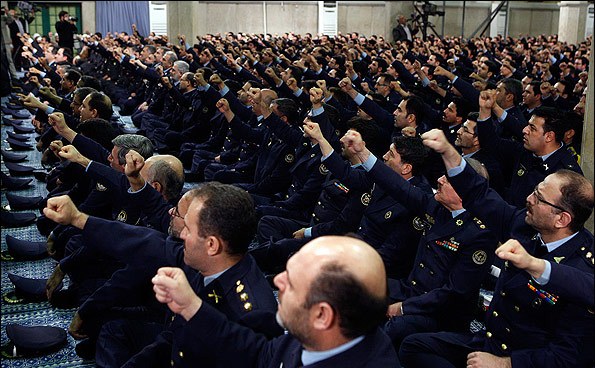

Goose stepping Nazis with the wickedly beautiful MG-42
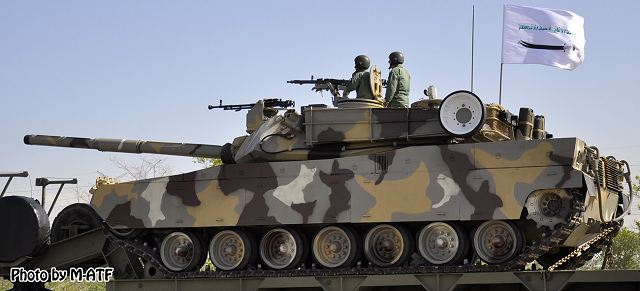

 My favourite....Turkmen tribals, will kick the shit out of any invader!!!!!!
My favourite....Turkmen tribals, will kick the shit out of any invader!!!!!! Adidas sports promo during a serious state military parade, using soldiers...hmmmmmm!!!!...no subliminal links to Nazi Germany then?
Adidas sports promo during a serious state military parade, using soldiers...hmmmmmm!!!!...no subliminal links to Nazi Germany then?

